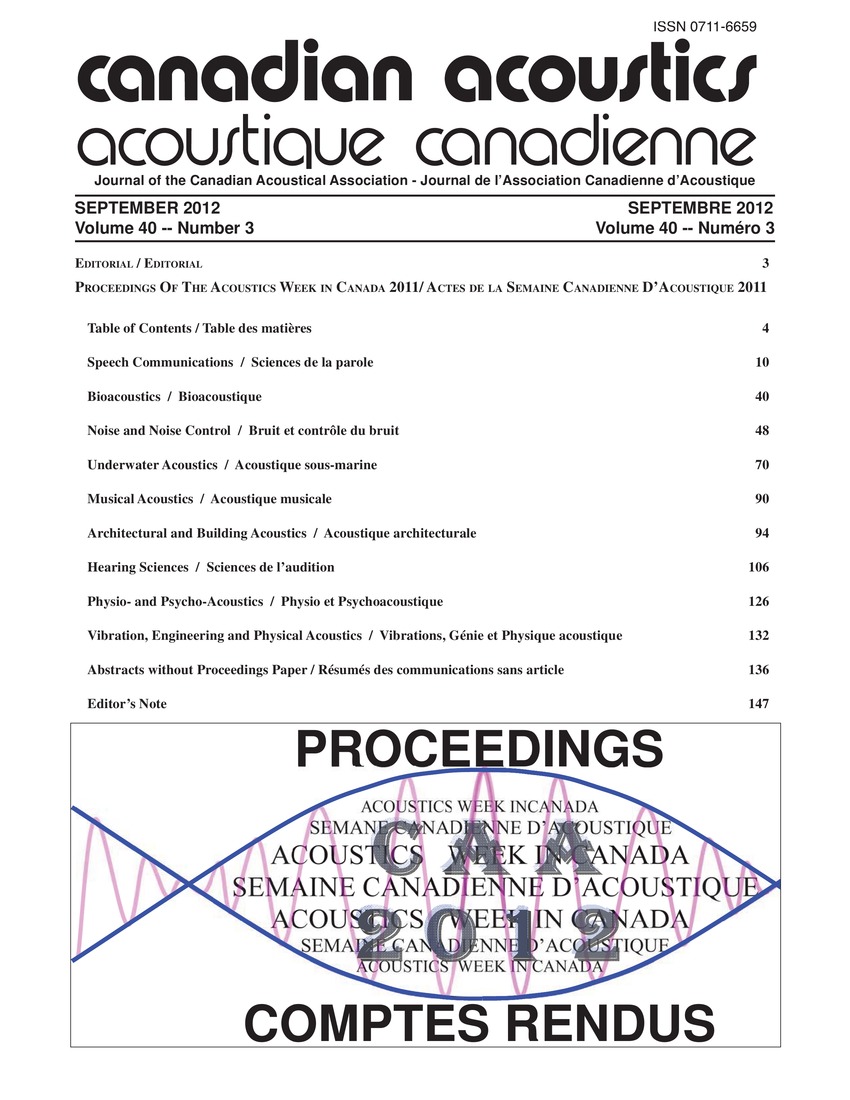The effect of aging on cochlear amplifier: A simulation approach using a physiologically-based electro-mechanical model of the cochlea
Keywords:
Acoustics, Audio frequency amplifiers, Computer simulation, Physiology, Cochlear amplifiers, Electromechanical models, Endocochlear potentials, Human cochleas, Inner ear, Mechanical elements, Middle ears, Organ of corti, Simulation approach, Sound pressure field, Transmission line models, Traveling waveAbstract
The electrical, acoustical, and mechanical elements of the cochlea are explicitly integrated into a transmission-line model to develop a physiological interpretation of the human cochlea insofar. The model enables fundamental simulation of specific cochlear lesions such as metabolic presbyacusis. A sound pressure field in the air is transmitted via the outer and middle ear to the inner ear. It causes the stapes to vibrate resulting in a traveling wave along the organ of Corti propagating from base towards apex. As the endocochlear potential (EP) decreases, the MET produces less receptor current which, eventually leading to a decline in the force/displacement generated by the somatic motor. The CFs of the curves tend to move backwards in a presbyacusis cochlea, this result is consistent with Robles and Ruggem where in a passive cochlea, the CFs are shifted backwards.Additional Files
Published
How to Cite
Issue
Section
License
Author Licensing Addendum
This Licensing Addendum ("Addendum") is entered into between the undersigned Author(s) and Canadian Acoustics journal published by the Canadian Acoustical Association (hereinafter referred to as the "Publisher"). The Author(s) and the Publisher agree as follows:
-
Retained Rights: The Author(s) retain(s) the following rights:
- The right to reproduce, distribute, and publicly display the Work on the Author's personal website or the website of the Author's institution.
- The right to use the Work in the Author's teaching activities and presentations.
- The right to include the Work in a compilation for the Author's personal use, not for sale.
-
Grant of License: The Author(s) grant(s) to the Publisher a worldwide exclusive license to publish, reproduce, distribute, and display the Work in Canadian Acoustics and any other formats and media deemed appropriate by the Publisher.
-
Attribution: The Publisher agrees to include proper attribution to the Author(s) in all publications and reproductions of the Work.
-
No Conflict: This Addendum is intended to be in harmony with, and not in conflict with, the terms and conditions of the original agreement entered into between the Author(s) and the Publisher.
-
Copyright Clause: Copyright on articles is held by the Author(s). The corresponding Author has the right to grant on behalf of all Authors and does grant on behalf of all Authors, a worldwide exclusive license to the Publisher and its licensees in perpetuity, in all forms, formats, and media (whether known now or created in the future), including but not limited to the rights to publish, reproduce, distribute, display, store, translate, create adaptations, reprints, include within collections, and create summaries, extracts, and/or abstracts of the Contribution.


